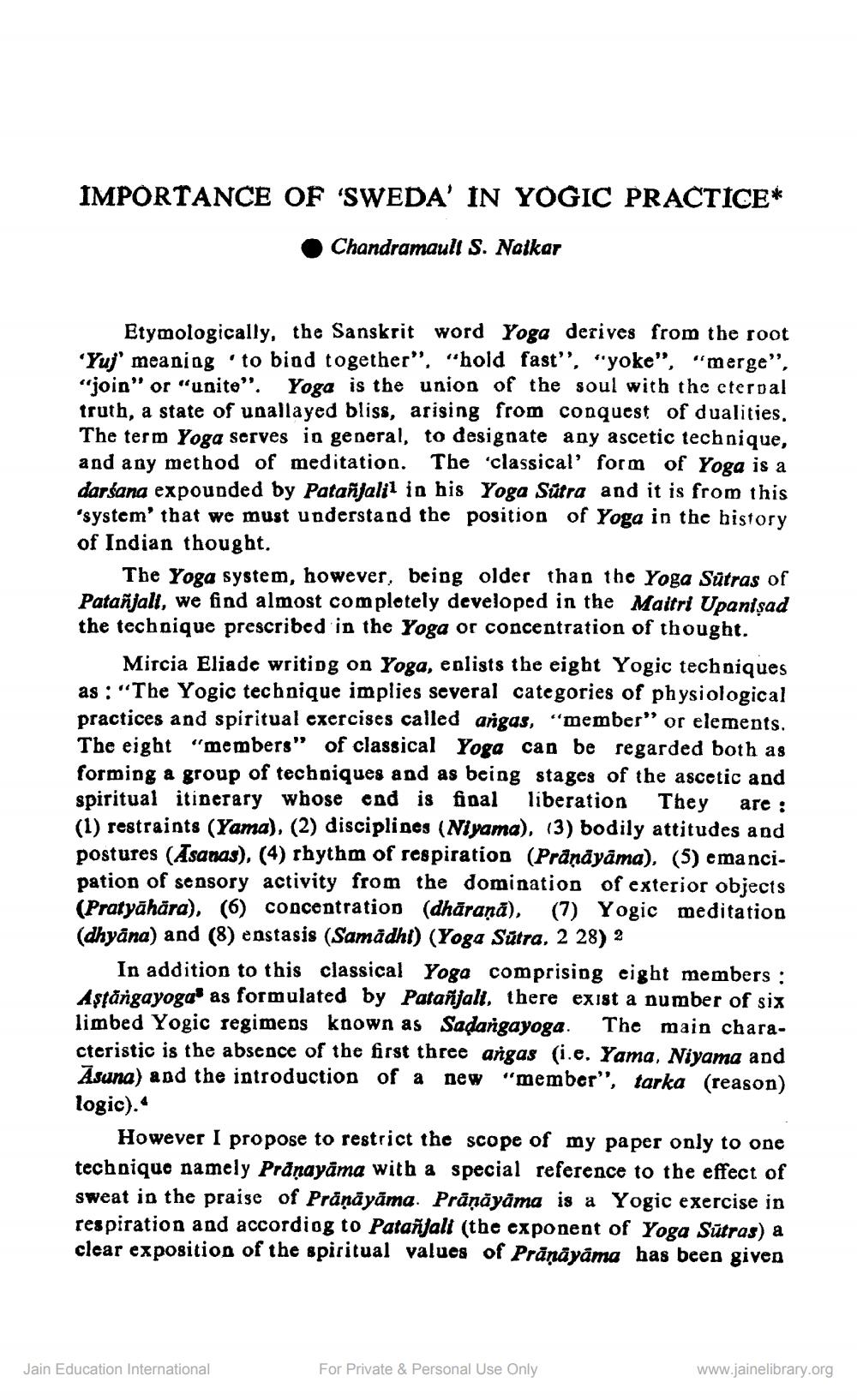________________
IMPORTANCE OF 'SWEDA' IN YOGIC PRACTICE* Chandramault S. Nalkar
Etymologically, the Sanskrit word Yoga derives from the root 'Yuj' meaning to bind together". "hold fast", "yoke", "merge", "join" or "unite". Yoga is the union of the soul with the eternal truth, a state of unallayed bliss, arising from conquest of dualities. The term Yoga serves in general, to designate any ascetic technique, and any method of meditation. The 'classical' form of Yoga is a darśana expounded by Patanjali1 in his Yoga Sutra and it is from this 'system' that we must understand the position of Yoga in the history of Indian thought.
The Yoga system, however, being older than the Yoga Sutras of Patanjali, we find almost completely developed in the Maitri Upanisad the technique prescribed in the Yoga or concentration of thought.
Mircia Eliade writing on Yoga, enlists the eight Yogic techniques as "The Yogic technique implies several categories of physiological practices and spiritual exercises called angas, "member" or elements. The eight "members" of classical Yoga can be regarded both as forming a group of techniques and as being stages of the ascetic and spiritual itinerary whose end is final liberation They are: (1) restraints (Yama), (2) disciplines (Niyama), (3) bodily attitudes and postures (Asanas), (4) rhythm of respiration (Prāṇāyāma), (5) emancipation of sensory activity from the domination of exterior objects (Pratyāhāra), (6) concentration (dhāraṇā), (7) Yogic meditation (dhyāna) and (8) enstasis (Samadhi) (Yoga Sutra, 2 28) 2
In addition to this classical Yoga comprising eight members: Aştăngayoga as formulated by Patanjalt, there exist a number of six limbed Yogic regimens known as Sadangayoga. The main characteristic is the absence of the first three angas (i.e. Yama, Niyama and Asuna) and the introduction of a new "member", tarka (reason) logic).4
However I propose to restrict the scope of my paper only to one technique namely Prāṇayāma with a special reference to the effect of sweat in the praise of Präṇāyāma. Prāṇāyāma is a Yogic exercise in respiration and according to Patanjali (the exponent of Yoga Sutras) a clear exposition of the spiritual values of Prāṇāyāma has been given
Jain Education International
For Private & Personal Use Only
www.jainelibrary.org




